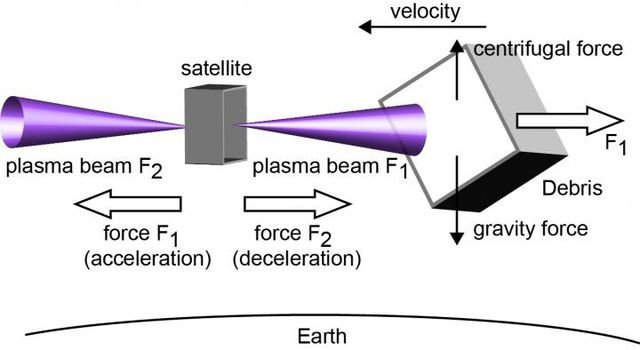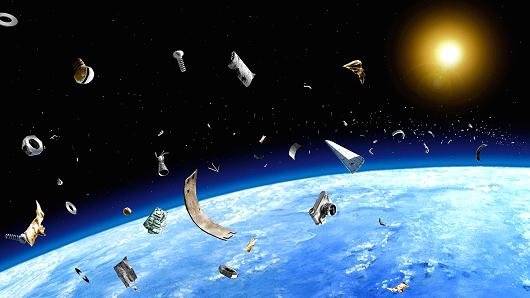New Space Junk Solution Would Clean Up Debris With Ion Beams
Space junk is a growing problem, and with the private space industry racing to make tourism in Low Earth Orbit (LEO) it will only become more pressing. The European Space Agency estimated in 2017 that there were 19,894 pieces of space junk circling the Earth, coming to a combined weight of least 8,135 tonnes. An international research project from Japan and Australia offers a new potential solution: an ion beam shepherd (IBS), a still-hypothetical contactless approach originally designed for asteroid deflection.
The IBS is a relatively new concept, formally introduced to the world in an academic paper in 2012. Originally pitched for asteroid deflection, the paper describes it as a beam which "can be generated with state-of-the art ion engines from a hovering spacecraft with no need for physical attachment or gravitational interaction with the celestial body."
With a satellite shooting out a plasma beam and multiple propulsion systems keeping it in place, the system could hypothetically move large asteroids. And now, say scientists, it could be used to clear out space junk orbiting the Earth. Instead of shoving an asteroid to the side, it would push debris towards the Earth's atmosphere, letting it burn up harmlessly.
If the debris removal can be performed by a single high-power propulsion system, it will be of significant use for future space activity," says Associate Professor Kazunori Takahashi from Tohoku University in Japan
One problem with an IBS as a hypothetical is Newton's Third Law. Since every action has an equal and opposite reaction and no friction to keep it in place, the IBS would push itself backwards with each blast. This means that a secondary propulsion system would need to be engineered, which can increase a satellite's size and weight.
In order to solve the problem, the Japanese and Australian scientists propose using what's known as a helicon double-layer thruster. The inventor of the helicon thruster, Dr. Christine Charles, is a co-author of the paper describing this new method published in Scientific Reports.
The helicon thruster gets its name from the helicon coils it uses, versions of which can be used in anything from aerospace to boiler repair. A traveling electromagnetic wave, created with a helicon coil, co-mingles with an electrical current to manipulate moving plasma.
In a lab experiment with a helicon thruster, the "bi-directional ejection of plasma plumes from the single plasma thruster was precisely controlled with a magnetic field and gas injection." In other words, it was able to control itself and move exactly where the scientists wanted it to move.
"The helicon plasma thruster is an electrodeless system, which allows it to undertake long operations performed at a high-power level." says Takahashi. "This discovery is considerably different to existing solutions and will make a substantial contribution to future sustainable human activity in space."

@steemcleaners
https://www.google.com.ph/amp/s/www.popularmechanics.com/space/satellites/amp23490588/new-space-junk-removal-system/